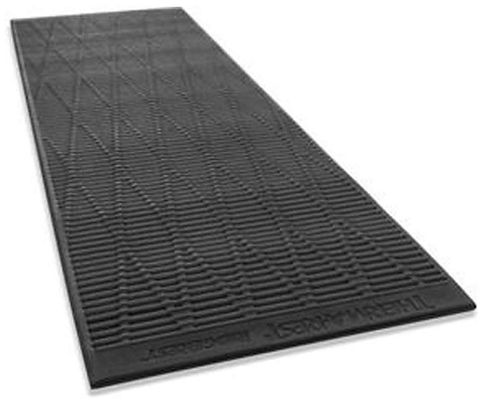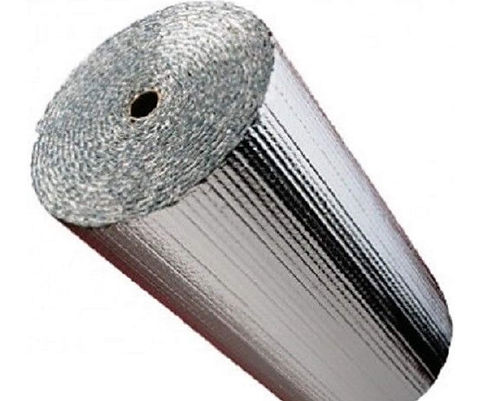WHAT CAN YOU LEARN FROM A ONE-LEGGED GUY ABOUT HIKING, BACKPACKING AND GEAR?
Staying Warm in a Hammock
Unless you're hammocking in the summer and during the daytime, you're going to get cold in a hammock. Even wrapped up in a zero-degree sleeping bag, the air moving beneath you will literally pull the heat out of you due to convective cooling.
Why doesn't the sleeping bag keep you warm? Sleeping bags are designed for ground camping where between the ground and the sleeping bag you have a pad to prevent conduction cooling. When you get in your sleeping bag in a hammock, all that wonderful insulation is flattened allowing the air to get in close and reduce your body temperature.
There are several ways to solve this dilemma and I think I've tried them all. Here's my review of them with pros, cons and recommendations.
Note: Amazon Associates Disclosure: As an Amazon Associate, I earn from qualifying purchases.
Under Quilts

The under quilt is the go-to solution for most hammockers. Essentially, it's a sleeping bag on the outside of your hammock.
Pros:
-
In some cases, you don't even need a sleeping bag.
-
Combined with a good sleeping bag, you can be comfortable at 32°F (0°C)
-
Doesn't make noise when you move around in the hammock.
Cons:
-
Can be a hassle to setup
-
Depending on the brand, can be bulking and heavy
Pictured: Onewind 4 Season Under Quilt Link: Underquilt OD Green
5% Discount with code: GLENNBARFIELD
Inflatable Pad

Originally designed for ground camping, these have become a decent option for many hammock campers.
Pros:
-
Very light and small
-
Allows just enough air circulation preventing back sweat at night
Cons:
-
One little hole and it's all over.
-
In the winter, these will often cool down and defeat the whole purpose of the insulation.
-
Slippery. They can slide out from under you resulting in CBS.
-
Makes noise when you moved around.
Pictured: SmartRest Sleeping Pad Link: https://amzn.to/3gaEQ33
Mummy Under Quilt

It's a simple solution, fit the whole hammock into a sleeping bag so you only have to pack along one item.
Pros:
-
No need to bring a pad or extra under quilt
-
Nice and even insulation all the way around
-
Can block out the morning light for a little more sleep
-
Makes no noise when you move around.
Cons:
-
Doesn't fit larger hammocks
-
Setting up is a hassle
-
Can feel a little claustrophobic
Pictured: GEERTOP Ultralight 4 Season Underquilt Link: https://amzn.to/3CBuosW
Wool Blanket

The humble wool blanket. I have used one under my sleeping bag several times and slept just fine.
Pros:
-
Fire retardant
-
Goes from the campfire to the hammock and back.
-
Can wrap around your sleeping bag for a little more insulation
-
Makes no noise when you move around.
Cons:
-
Heavy, 3lbs to 5lbs depending on the quality of wool
-
Bulky
-
On colder nights it's not going to keep you warm enough
Pictured: Arcturus Wool Blanket Link: https://amzn.to/3EI2m1B
Closed Cell Pad

Favored by ultralight hikers, this will work as a sleeping pad in a hammock too.
Pros:
-
Incredibly light
-
Will work in three seasons
-
Will last for years and easy to clean
-
Doesn't make noise when you move around.
Cons:
-
You will get back sweat
-
Depending on the material, these can slip out from under you in the night
-
Narrow width can mean cold shoulders
Pictured: Stansport Camping Pad Link: https://amzn.to/3Tmh3ve
Closed Cell Pad with Ridges

You can get these with or without silver reflective coating. I recommend getting the 25-inch-wide version.
Pros:
-
Ridges allow enough air circulation to prevent back sweat
-
Light weight
-
Durable as heck and easy to clean
-
Doesn't make noise when you move around
Cons:
-
Can bunch up and create a ridge under your back
-
A little bulky on the backpack
Pictured: Therm-a-Rest Classic Link: https://amzn.to/3T5sfwJ
Reflectix

Yes, this is the stuff air ducts are wrapped in to insulate them. It reflects ~98% of the heat back. I created a customized pad with this material with upper torso wings to keep my shoulders warm. I will go to my grave praising this material for hammock campers. Here's a video from the Bearded Hobbit on his DIY Reflectix sleeping pad.
Pros:
-
Very light
-
Reflects ~98% of the heat back
-
Cheap
-
Easy to clean
-
You can cut it up and customize your pad
Cons:
-
Can bunch up and create a ridge
-
Can slide around under you
-
Back sweat on warmer nights
-
Will make noise when moving around, (can be muffled using a wool blanket or something similar).
Pictured: Reflectix 24 in. x 10 ft Link: https://amzn.to/3ewZWIk
Recommendations
Early Spring - Depending on where you live, early spring can be fairly cold. In this case I recommend either an under quilt, or Reflectix with a wool blanket between the Reflectix and your sleeping bag. Three season sleeping bag.
Late Spring to Late Summer - Unless the nights where you hammock camp are particularly cold, the ridged close cell pad will work well. Light weight or three season sleeping bag.
Early Fall - It's back to the underquilt or Reflectix with a wool blanket. Three season sleeping bag.
Late Fall and Winter - When backpacking in the winter, I've hammock camped down to 15°F (-9.4°C) by using an underquilt and the Reflectix between my hammock and underquilt. Four season sleeping bag.


